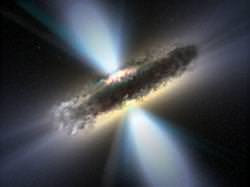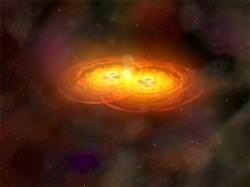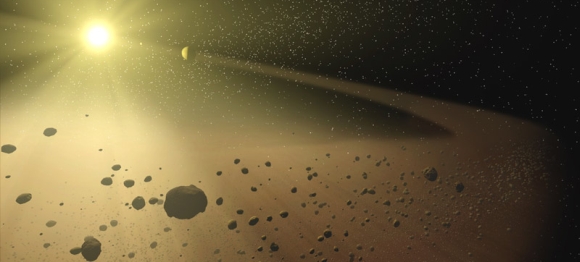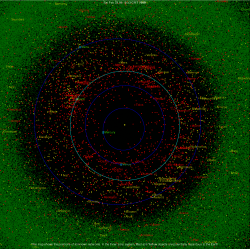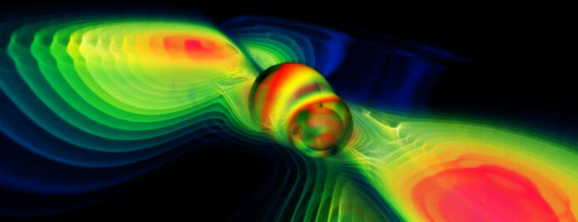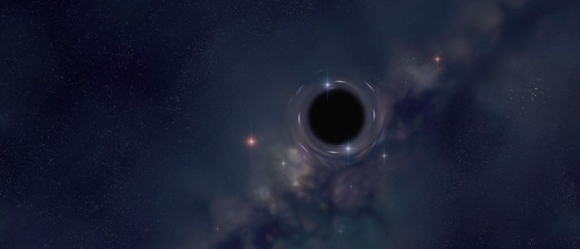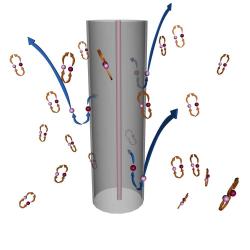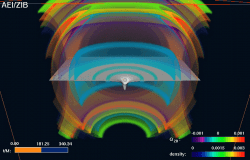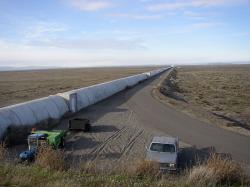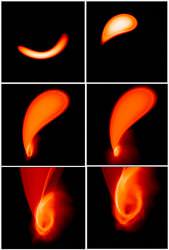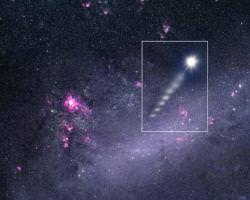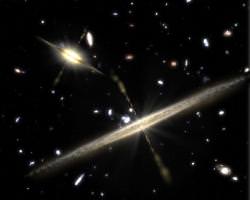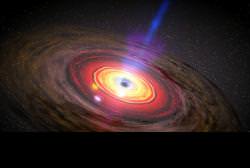It is widely accepted that supermassive black holes (SMBHs) sit in the centre of elliptical galaxies or bulges of spiral galaxies. They suck in as much matter as possible, generating blasts of radiation. Stars, gas and everything else nearby forms a compact “halo” and then falls to a gravitationally enforced death spiral. The greedy nature and the sheer size of these black holes have led to the idea that dark matter may supply (or may have supplied) the SMBH with some mass during its evolution. But could it be that dark matter may not be significantly involved after all? This might be one cosmic phenomenon dark matter can’t be blamed for…
Black hole accretion disks are compact halos created as dust, gas and other debris are pulled toward a black hole event horizon. Accretion disks radiate electromagnetic radiation, and the frequency of which depends on the mass of the black hole. The more massive it is, the higher the energy of radiation emitted into space. In the case of a SMBH, the huge mass causes very bright emission as the matter from the accretion disk falls into the event horizon (the point at which gravity becomes so strong that even light cannot escape). As accretion disk matter falls toward the event horizon, approximately 10% of the mass is converted into energy and ejected as X-rays. This is a far more efficient energy conversion rate than the most efficient nuclear fusion reaction (approximately 0.5%). This X-ray emission can then be observed, creating a quasar, signifying a SMBH is driving the active galaxy.
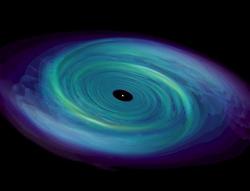
Interestingly, an SMBH is not thought to be formed from single dead massive star. They are thought to have been created from a “seed” and then grown over billions of years. The source of the mass feeding the growing SMBH comes from its accretion disk, but it is uncertain what form the matter comes in and at what rate it “feeds” the black hole. There are several possibilities as to how the largest black holes were seeded, but two are the most widely accepted:
- Intermediate black holes (with masses of several thousand Suns) are created by vast clouds which collapse to a single point. Black holes form and accretion disks grow.
- Massive primordial stars (the first stars, formed only 200 million years after the Big Bang) of a few hundred Sun masses may have collapsed to create smaller black holes, again forming accretion disks and growing over billions of years.
The mechanisms affecting the rate of accretion disk growth are not so clear-cut. Some theories suggest that huge quantities (most of the black hole mass) comes from dark matter. However, as dark matter is “non-baryonic” (i.e. the opposite to baryonic matter – the matter we know, love and observe in our universe) it will emit very little radiation as it falls into the black hole event horizon. If this is the case, SMBHs would grow disproportionately when compared with radiation emitted from galactic centres (only baryonic particles will emit X-rays).
New research headed by Sebastien Peirani (at the Institut d’Astrophysique de Paris, France) suggests only a very small fraction of a SMBH is composed from dark matter as it evolved. Dark matter is predicted to be collisionless and will be scattered very easily by baryonic gas clouds and stars. It seems unlikely that dark matter will be able to stay inside the black hole’s accretion disk for very long before it is repelled by all the “normal” matter being pulled toward the event horizon.
By modelling a “typical” accretion disk and comparing the results with observations of quasar luminosity, the French group found that most of the matter fuelling the SMBHs is relativistic baryonic matter. At a critical distance, outside the black hole, baryonic matter from the accretion disk is accelerated to a significant fraction of the speed of light, emitting radiation. Comparing this with simulations of a collisionless disk (i.e. the characteristics of dark matter), the baryonic model fits observations the best.
“Application of our results to black hole seeds hosted by halos issued from cosmological simulations indicate that dark matter contributes to no more than [approx.] 10% of the total accreted mass, confirming that the bolometric quasar luminosity is related to the baryonic accretion history of the black hole.” – Abstract from “Dark Matter Accretion into Supermassive Black Holes“
Source: arXiv

